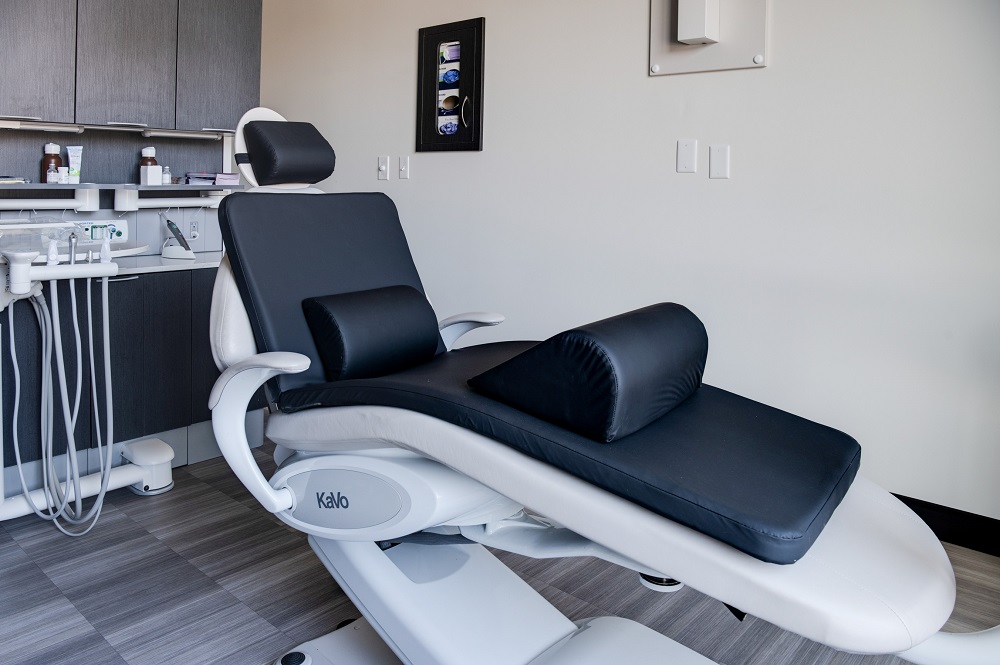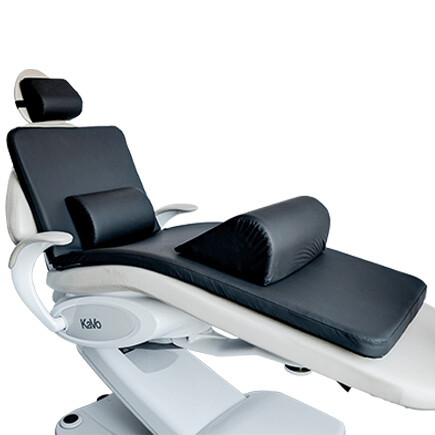Addressing the Comfort Gap in Modern Dental Chairs

Are your dental chairs making patients uncomfortable? While the design of dental chairs has evolved over the years, the number of people who actually enjoy and look forward to going to the dentists has not. Comfort plays a large role in this, and patient discomfort can negatively impact their level of anxiety during dental treatment.
There appears to be an inherent comfort gap when it comes to dental chairs. They are designed more for dental operator utility, rather than comfort, creating a less than pleasurable dental experience for patients. But there is a way to increase the comfort of nearly any dental chair, and it begins by filling the literal gaps in your dental chair.
The Head and Neck Gap
The most prominent and notable gap on any dental chair is the gap between the body of the chair and the built-in headrest. Some headrests are more static, while double articulating headrests offer a variety of positions. What none of these options do is offer an easy way to position the patient’s head to make it easy to access treatment areas, at least not in a way that is comfortable for the patient to maintain for extended periods of time. This is because the gap between the chair and the headrest inadequately supports the patient’s head when it’s being reclined enough to open their mouth and allow access to all treatment areas.
To preserve the best ergonomic working posture when working behind the upper arch, patients should be positioned so that the occlusal plane of the upper arch is 20-25 degrees behind the vertical. Without proper support behind their neck and cushioning on the back of the head, the patient can experience tension and stress on the spinal segments of the neck.
Filling the gap in the head and neck area can be accomplished with a right-sized dental headrest/neck pillow, which offers ample cushioning and allows the patient’s head to gently tilt backwards and for the jaw to naturally turn up in an open-forward position.
The Back Gap
Even the most advanced dental chairs leave a gap between the patient’s lower back and the chair itself, which can cause discomfort due to improper lumbar support. No dental chair is built to be custom fit for each and every person’s unique body. There will always be a gap between the lower back and the cushion, a gap that should be filled with a cushioned backrest. Backrests provide a cushioned level of support that relieves pain and discomfort in the lower back.
The gap between patients and dental chairs can also be filled with dental chair pads, which provide pressure point relief across the entirety of the dental chair. Although not tailored to a specific part of the body, body chair pads create a more uniform cushioned surface that alleviates the pain and discomfort that can be caused by the uneven surface of dental chairs.
Fills the Gaps in your dental chairs and make your patients more comfortable with Crescent Products!
Shop today.
Bodyrest System Cushion Deluxe Bundle
The Crescent Bodyrest System consists of four memory foam pads, all working together to align patients for their maximum comfort as well as create perfect ergonomic positioning of the patient to reduce strain for you and your hygienists. Memory foam extends the full length of the Bodyrest pad to conform to the patient’s body and provide pressure point relief as it fills voids in spaces between patient and dental chair. The Headrest supports the patient’s neck and the slope of the cushion allows her or his head to gently tilt backwards and for the jaw to naturally turn up in an open-forward position. The Backrest supports the patient’s lumbar region. And, the Knee Support comfortably lifts the knees and works in conjunction with the Backrest to release additional pressure from the patient’s back and hips. All pads help stabilize and align the patient in the chair and are made with medical-grade material and easily wipe clean with common disinfectants. Available in six colors.
